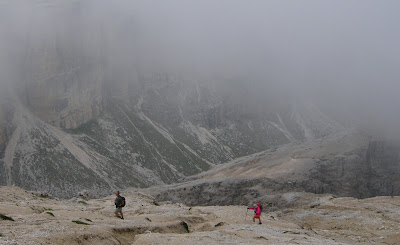The Dolomites (Italian: Dolomiti Ladin: Dolomites; German: Dolomiten [doːloːˈmɪtn̩]; Venetian: Dołomiti [doɰoˈmiti]: Friulian: Dolomitis) are a mountain range located in northeastern Italy.
They form a part of the Southern Limestone Alps and extend from the River Adige in the west to the Piave Valley (Pieve di Cadore) in the east.
The northern and southern borders are defined by the Puster Valley and the Sugana Valley (Italian: Valsugana). The Dolomites are nearly equally shared between the provinces of Belluno, South Tyrol and Trentino.
There are also mountain groups of similar geological structure that spread over the River Piave to the east – Dolomiti d'Oltrepiave; and far away over the Adige River to the west – Dolomiti di Brenta (Western Dolomites). There is also another smaller group called Piccole Dolomiti (Little Dolomites) located between the provinces of Trentino, Verona and Vicenza (see the map).
One national park and many other regional parks are located in the Dolomites. In August 2009, the Dolomites were declared a UNESCO World Heritage Site.
The Dolomites, also known as the "Pale Mountains", take their name from the carbonate rock dolomite, itself named for 18th-century French mineralogist Déodat Gratet de Dolomieu (1750–1801), who was the first to describe the mineral.
During the First World War, the front line between the Italian and Austro-Hungarian forces ran through the Dolomites and there was fierce mine warfare.
There are now open-air war museums at Cinque Torri (Five Towers) and Mount Lagazuoi. Many people visit the Dolomites to climb the vie ferrate, protected paths created during the First World War.
A number of long distance footpaths run across the Dolomites, which are called "alte vie" (i.e., high paths). Such long trails, which are numbered from 1 to 8, require at least a week to be walked through and are served by numerous "Rifugi" (huts). The first and, perhaps, most renowned is the Alta Via 1.















No comments:
Post a Comment